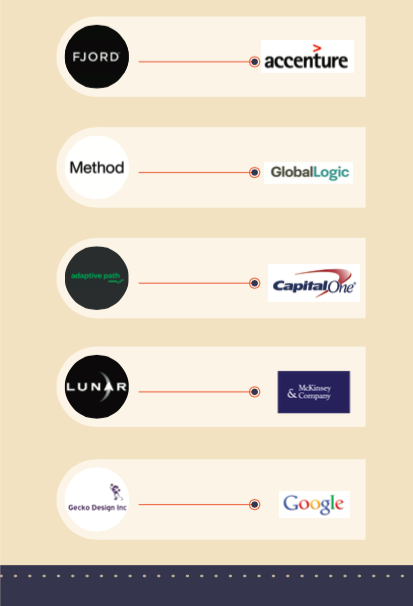Big business has been hungry. Not for money per se, but for good design.
Lately, there have been unprecedented power plays made by corporates seeking to gobble up top design firms: Google and Gecko Design Inc., Facebook and Teehan+Lax, and CapitalOne and Adaptive Path, to name a few.
In my two decades of working with a diverse mix of clients, I have seen firsthand the transformative effects that design can play on business. Well beyond a strong brand identity, what’s at the core of a truly design-centric organization is empathy. This translates as the keen ability for a company to listen, and learn from customers, and continually strive to delight them time and again. For many established companies, the shift to becoming a design-led business is difficult, as they lack both the methodologies and mindset. However, the benefits are vast. Alongside increased customer retention and growth, design can lead to more engaged employees, richer partnerships, and a more responsive way of operating. With this ability to adapt through design, pioneering leaders have learned to welcome change and create truly innovative 21st century businesses.
The original champions of design in business include luminaries, such as Tim Brown, David Kelley, and Roger Martin. All have been touting the alluring transformations that occur when design is placed at the heart of the organization. As former dean of the Rotman School of Management and co-creator of DesignWorks, Martin succinctly summed up design’s undeniable influence when he said, “When it comes to innovation, business has much to learn from design. The philosophy in design shops is, ‘try it, prototype it, and improve it.’”
Shockingly, it has taken nearly 30 years for this contention to take hold and manifest itself in every industry. Whether it is computing (IBM hosts the largest design team in the world), finance (Barclays bank is now London’s single largest employer of designers), management (McKinsey has just purchased top Silicon Valley design firm Lunar), or government (GOV.UK has received countless accolades for its user experience design)—no sector will remain unaffected.
Injecting design into your startup
How can you create a culture of design within your young business and nurture it as you continue to grow and scale?
It’s by no means an easy feat, but an example that could help shed some light is how Google has evolved into a design company. In a somewhat mystical manner, it continuously manages the gentle push and pull between the company’s vision and the living and breathing organization itself.
Another person to look to is John Maeda, design partner at venture capital firm Kleiner Perkins Caufield & Byers, who determined the importance of design in technology and business. The former president of the Rhode Island School of Design is credited with helping foster the first generation of engineers to elegantly design, as well as the designers to fluently code. He explains in his SXSW presentation that in the not too distant future, all technology companies will be design companies.
Beauty that is carefully crafted
In the technology world, we have always believed that faster is better. However, Moore’s Law is no longer cutting it. In fact, it’s the holistic view, the entire customer experience, that really matters. Design is, and always was, the key. Some of the most forceful and well-funded startups—Pinterest, Airbnb and Vice Media—have designers as co-founders. Over the past five years, there have been over 30 startups co-founded by designers that have now been consumed by big tech companies. A 30-week challenge for design founders has just launched, further evidencing the power of design in successfully starting a startup.
As the role design plays in business continues to thrive, we the customers stand to benefit. Products won’t just look better—they will work better. Services won’t just be provided—they will delight again and again. Organizations won’t just sustain, through good design—they will adapt and evolve to become something truly beautiful.


